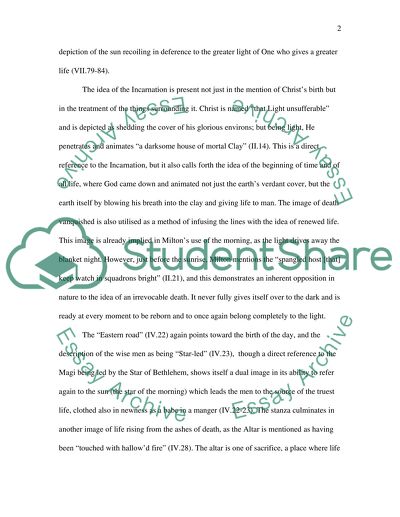Cite this document
(On the Morning of Christ's Nativity by John Milton Book Report/Review, n.d.)
On the Morning of Christ's Nativity by John Milton Book Report/Review. Retrieved from https://studentshare.org/literature/1535942-on-the-morning-of-christs-nativity-focuses-on-the-incarnation-lycidas-on-the-resurrection-but-both-treat-of-redemptive-divine-power-how-does-miltons-u
On the Morning of Christ's Nativity by John Milton Book Report/Review. Retrieved from https://studentshare.org/literature/1535942-on-the-morning-of-christs-nativity-focuses-on-the-incarnation-lycidas-on-the-resurrection-but-both-treat-of-redemptive-divine-power-how-does-miltons-u
(On the Morning of Christ'S Nativity by John Milton Book Report/Review)
On the Morning of Christ'S Nativity by John Milton Book Report/Review. https://studentshare.org/literature/1535942-on-the-morning-of-christs-nativity-focuses-on-the-incarnation-lycidas-on-the-resurrection-but-both-treat-of-redemptive-divine-power-how-does-miltons-u.
On the Morning of Christ'S Nativity by John Milton Book Report/Review. https://studentshare.org/literature/1535942-on-the-morning-of-christs-nativity-focuses-on-the-incarnation-lycidas-on-the-resurrection-but-both-treat-of-redemptive-divine-power-how-does-miltons-u.
“On the Morning of Christ'S Nativity by John Milton Book Report/Review”. https://studentshare.org/literature/1535942-on-the-morning-of-christs-nativity-focuses-on-the-incarnation-lycidas-on-the-resurrection-but-both-treat-of-redemptive-divine-power-how-does-miltons-u.


